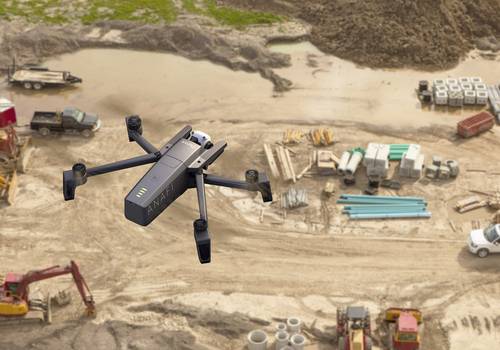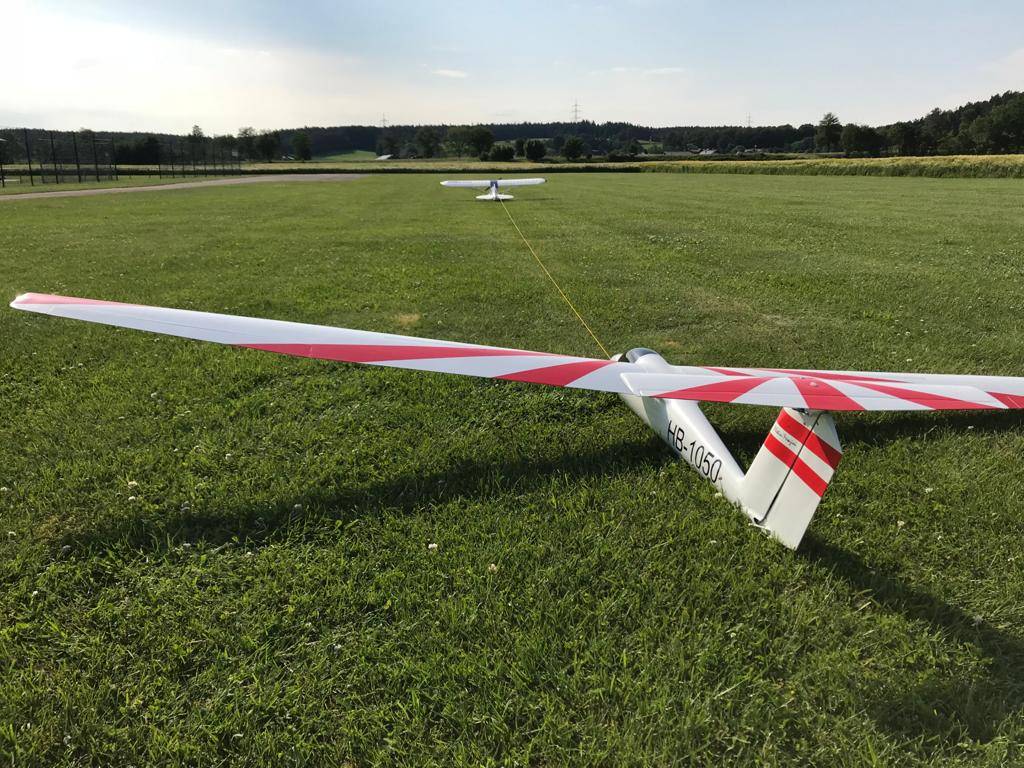The new EU drone regulation 2021
Updated: 16.05.2022 | Reading time: 20 minutes
This text is machine translated.
A few years ago, model builders and electronics specialists began to develop very special model airplanes. The classic wings, which provided lift, were replaced by several propellers. These unmanned aerial vehicles were initially referred to as copters, with the number of propellers being given priority. The most common were quadro-copters with four propellers. However, there were already large hexa-copters with six or octo-copters with eight propellers.
In the meantime, however, the names of unmanned aerial systems have shifted more and more from copter to drone.
What was often ridiculed in the beginning has now developed into a gigantic market worldwide.
The technology has become better and better, allowing payloads and flight times to be increased. This has also led to an increase in commercial applications, which is why more and more people are interested in unmanned aerial vehicles.
And because prices have steadily become cheaper, the number of drones in operation has exploded within a very short space of time.
In addition to purely recreational use, unmanned aircraft systems (UAS) are increasingly being developed and used for commercial and official purposes. In order to ensure the safe operation of drones and rule out any risk to manned aviation, regulations had to be created for their use. To this end, a wide range of legal regulations were enacted years ago at a national level.
This was followed in 2019 by a uniform European regulation for all EU countries, which was due to come into force on July 1, 2020. However, due to the coronavirus pandemic, the date was postponed to 01.01.2021.
The requirements of the EU Drone Regulation are set out in the two documents
Delegated Regulation (EU) 2019/945
Implementing Regulation (EU) 2019/947
are precisely defined.
The following regulations must also be observed:
Implementing Regulation (EU) 2020/746 with the postponements due to the coronavirus pandemic.
Implementing Regulation (EU) 2020/639 amending Implementing Regulation (EU) 2019/947.
Delegated Regulation (EU) 2020/1058 amending Delegated Regulation (EU) 2019/945
Implementing Regulation (EU) 2022/425 with current postponements
In addition to the aforementioned EU directives on drone regulations, there are also country-specific requirements that must also be observed and complied with.
Important notes
It's not just about drones!
Even though the term "drone regulation" is commonly used, the regulation applies to all unmanned aircraft systems (UAS). This means that all types of remote-controlled model aircraft or helicopters are also included and affected.
Quick and easy registration and certificate of competence A1/A3:
Compulsory insurance
Insurance is still compulsory. The operation of an unmanned and remote-controlled aircraft is associated with certain risks that are often not covered by traditional liability insurance. It is therefore essential to take out suitable supplementary insurance. Even if operation is permitted without further conditions according to the Drone Ordinance.
The most important facts about the new EU drone regulation:
-
Unmanned aerial systems (UAS) are divided into three different operating categories (open, special and subject to certification).
-
The open category is divided into the subcategories A1, A2 and A3.
-
The maximum permitted flight altitude will be increased from 100 m to 120 m.
-
Introduction of two new certificates of competence (class A1/A3 and A2) and the operator certificate (LUC certificate).
-
Adjustment of the weight limits.
-
Registration of remote pilots and sending of identification (electronic ID), depending on the class.
-
The minimum age for users is 16 years, although there are exceptions according to Implementing Regulation (EU) 2019/947, Article 9.
-
The EU Drone Regulation does not apply to remote-controlled aircraft intended exclusively for indoor use.
As unmanned flying objects come in different sizes and are used for a wide variety of tasks, operations have been divided into three categories:
The open operating category is divided into three sub-categories A1, A2 and A3. The distinctions relate, among other things, to flying in the vicinity of people.
Subcategory A1:
In this subcategory, flying close to people is also possible. However, no crowds of people in the open air and no uninvolved persons may be flown over. Should this nevertheless happen, the overflight must be terminated as quickly as possible.
Subcategory A2:
When flying according to subcategory A2, a distance of at least 30 meters must be maintained from uninvolved persons. If flying in slow flight mode, the minimum distance may also be 5 meters.
Sub-category A3:
This category is intended for flying away from uninvolved people. No persons may be present in the entire flight area and a minimum distance of 150 m from industrial, commercial, residential and recreational areas must be maintained.
In addition to the operating categories, commercially manufactured and marketed drones and model aircraft are also divided into different drone classes (UAS classes). There are seven different classes from drone class C0 to C6, with the number representing a statement about the safety risk. The higher the number, the higher the risk.
Depending on which class the drone falls into, different requirements must be met for operation. We have summarized some of the most important points below:
The different operating categories and drone classes now result in possible applications, which we have summarized in the following table. However, we have limited ourselves to the essential characteristics of the different classes and the relevant UAS classes.
| Specification | C0 | C1 | C2 | C3 | C4 |
|---|---|---|---|---|---|
| Weight/impact allergy | < 250 g | < 900 g/<80 J | < 4 kg | < 25 kg | < 25 kg |
| Max. Weight | 19 m/s = 68 km/h | 19 m/s = 68 km/h | - | - | - |
| Max. Flight altitude | 120 m | 120 m or adjustable height limit | 120 m or adjustable height limit | 120 m or adjustable height limit | 120 m or depending on the model airfield |
| Technical requirements | Toy directive or <68 km/h, height limit | < 68 km/h, altitude limit, emergency landing in case of signal loss | Altitude limitation, emergency landing in case of signal loss, low-speed mode, predetermined breaking points | Altitude limitation, emergency landing in case of signal loss, low-speed mode, predetermined breaking points | No automatic control allowed |
| Registration of the remote pilot required | No or yes for camera drones | Yes | Yes | Yes | Yes |
| Competence of the remote pilot | Read operating instructions | Read operating instructions, EU certificate of competence A1/A3 | Read operating instructions, EU certificate of competence A1/A3, remote pilot certificate A2 | Read operating instructions, EU certificate of competence A1/A3 | Read operating instructions, EU certificate of competence A1/A3 |
| Remote identification required | No | Yes | Yes | Yes | No |
| Geo-sensitization required | No | Yes | Yes | Yes | No |
| Operation in the open category | A1 = Flight over people | A1 = Flight over people | A2 = Flight close to people, A3 = flight far away from people | A3 = Flight far away from people | A3 = Flight far away from people |
Explanation of the table
Registration of the remote pilot
Every user or remote pilot of a UAS must be registered with the competent authority. Unless the aircraft is lighter than 250 g and has no sensors for recording personal data (camera). In Germany, the Federal Aviation Office (LBA) is responsible for registration. The authority then assigns the respective person an individual eID number. This number must be affixed to the model. This is mandatory from 01.01.2021. In order to give the many remote pilots sufficient time to register, the LBA has lifted the registration requirement in the "open" and "special" categories until the end of April 2021. However, signs with the name and address of the remote pilot must be attached to the models.
Professional competence of the remote pilot
If UAS of class C1 or higher are to be used, the user must obtain the EU certificate of competence. To this end, the competent authorities of the member states will set up online portals where users can familiarize themselves with the necessary content and also take the 40-question exam online. The Federal Aviation Authority responsible in Germany will activate the access points at the end of December 2020 and is expecting a very high demand at the beginning of January. The certificate of knowledge used in Germany to date is still valid until 31.12.2022 and entitles the holder to fly drones in the open class.
Remote identification
During remote identification, the ID number of the remote pilot, the serial number of the UAS, the time stamp, the geographical position, the altitude above the take-off point and other information are transmitted. The information can then be read out using a smartphone with a suitable app. There is still a transitional period until 31.12.2022 for the implementation of this regulation. From 01.01.2023, the regulation will be mandatory.
Geo-sensitization
Geo-sensitization or geo-awareness is a function in which the UAS automatically detects flight space boundaries. The drone pilot is warned so that they can take effective measures to prevent a violation of the boundaries.
Even though the new EU drone regulation will be binding from January 1, 2021, drones and model aircraft that are not classified are still being sold and operated. The EU regulation makes clear statements here:
UAS types that were placed on the market before 01.01.2024 and are not classified can be operated in open category A1. Provided they weigh less than 250 g including payload. UAS types that weigh 250 g or more but are still lighter than 25 kg can be operated in open category A3.
Transitional regulation
According to the EU Drone Regulation, there is a transitional regulation for existing unmanned aircraft systems. The existing operating authorizations are valid for one year after 01.01.2021. The transitional regulation already came into force on 01.07.2020 and has a term of 30 months. Accordingly, the transitional period ends on 31.12.2022.
In accordance with this transitional regulation, unmanned aircraft with a take-off mass of less than 500 g can also fly in open class A1. However, if uninvolved persons are unexpectedly flown over, the overflight must be kept as short as possible.
Unmanned aircraft lighter than 2 kg may be operated in open class A2. The minimum distance to persons must be 50 m and the drone pilot must hold the EU certificate of competence A1/A3 and the EU remote pilot certificate A2.
For a better overview, we have listed the different weight classes once again:
| Data | Operation in the open class | EU certificate of competence A1/A3 | EU Remote Pilot Certificate A2 |
|---|---|---|---|
| Less than 250 g & max. 68 km/h | A1 | No, but recommended | No |
| Less than 500 g | A1 | Yes, from 01.01.2023 | No |
| Less than 2 kg & closer than 150 m to residential or commercial areas | A2 | Yes | Yes |
| Less than kg & at a distance of more than 150 m from residential or commercial areas | A3 | Yes | No |
Important note!
If a UAS with a maximum take-off mass (MTOM) of between 2 kg and less than 25 kg has to be used closer than 150 m to residential or commercial areas, this is only possible in the special category with the associated conditions.
Selbstverständlich gilt auch für bestehende Modelle, egal ob Drohne, Hubschrauber- oder Flugmodell die bereits erwähnte Versicherungs- und Registrierungspflicht.
We have listed some examples of drones here to show how they can continue to be operated during the transition period and beyond. As only the take-off weight plays a role, any other existing aircraft can easily be classified.
DJI Mavic Mini, DJI Mavic Mini 2 or Ryze Tech Trello
As these drones have a take-off weight of less than 250 g, only insurance and, due to the built-in camera, registration are required.
Parrot Anafi, DJI Spark or DJI Mavic Air 1
For drones in the weight class from 250 g to < 500 g, registration is required in addition to insurance and, from 01.01.2023, the EU Certificate of Competence A1/A3. After expiry of the transitional regulation on 31.12.2022, operation will only be possible in the open category A3.
DJI Mavic 2 Pro, DJI Mavic Air 2, Yuneec Mantis G, DJI Enterprise Phantom or Yuneec Typhoon H Plus
For drones in the 500 g to < 2 kg weight class, insurance, registration and the EU Certificate of Competence A1/A3 and the EU Remote Pilot Certificate A2 are required. The minimum horizontal distance to persons must be 50 m. After expiry of the transitional regulation on 31.12.2022, operation will only be possible in the open category A3.
DJI Inspire or DJI Matrice M600 Pro
As these copters weigh more than two and less than 25 kg, they can only be operated in the open category A3 or in the special category, depending on where they are used.
The new EU regulation also affects remote-controlled model airplanes and remote-controlled model helicopters. This does not change much for model pilots who operate their hobby within an association and on an approved model airfield.
As operation on model airfields is considered to be very safe, the various associations and clubs have the option of applying to the Federal Ministry of Transport for their own operating license.
Model flying can then continue to be operated in accordance with the existing guidelines and regulations. Most models, even if they are not classified, are operated in class C4 and in the open category A3.
As the application for and approval of the operating permit will take some time, flying operations at model airfields can continue without a permit during the transition period until January 1, 2023. The associations also have the option of registering their members collectively with the Federal Aviation Office so that each individual member does not have to do this themselves.
Model pilots who do not belong to an association and do not fly on an approved model airfield must comply with the stricter rules of the EU regulation when practising their hobby. In this case, for example, the maximum flight altitude is limited to 120 m.
Can I continue to fly my unclassified drone after January 1, 2021?
Yes, you can definitely continue to fly the drone. Special transitional regulations apply to ensure this. Depending on the weight of the drone, it depends on which category of the open class you are allowed to fly in. However, it may be necessary for you to obtain a certificate of knowledge or now a certificate of competence from one of the bodies recognized by the LBA.
What do small and large drone licenses mean?
The proof of knowledge according to §21e of the Air Traffic Regulations is also referred to as a small drone license or model flying license. The proof of knowledge according to §21d of the Air Traffic Regulations is also referred to as a large drone license.
What happens to my old national drone license?
According to EU drone legislation, both the drone license and the certificate of proficiency remain valid for one year. After that, the drone license and the certificate of proficiency will be replaced by the EU Certificate of Competence A1/A3 or the EU Remote Pilot Certificate A2. The certificates of competence can usually be obtained from the offices recognized by the Federal Aviation Office following an online course.
What rules apply to hang gliding?
When slope flying with model gliders, a maximum distance of 120 m from the nearest point on the earth's surface must always be maintained. If the model glider including payload is lighter than 10 kg (Maximum Take-Off Mass = MTOM), it can also be flown at a greater distance from the ground. Provided that the height above the remote pilot of 120 m is not exceeded at any time.
What is meant by privately manufactured UAS?
The manufacturer only has to classify an unmanned aircraft if it is a complete system with all the necessary components, such as model, drive and remote control. Even if the system is supplied as a kit and still has to be assembled by the user. If the operator only purchases the model and then retrofits existing remote control or drive components, the model is considered to be privately manufactured. If the ready-to-fly model including battery weighs less than 250 g, it can be operated as a class C0 model in subcategory A1. If the model is lighter than 25 kg, it can be operated as a class C4 model in sub-category A3.



